CS 208 w20 lecture 24 outline
1 Review
Using this diagram, fill in the steps for a page hit and a page fault:
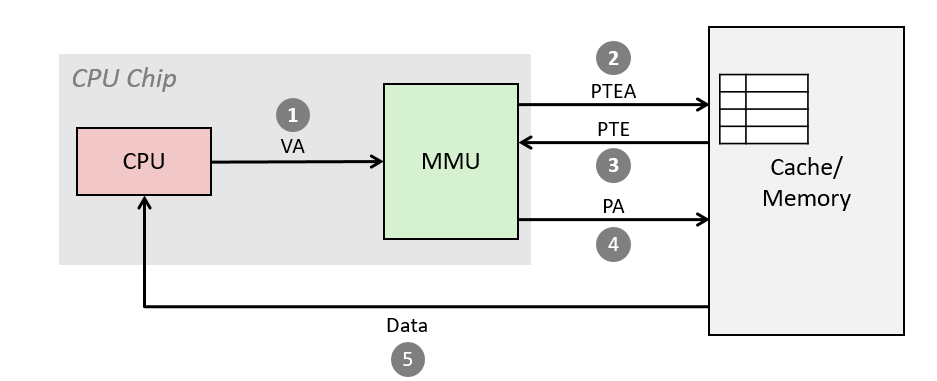
- processor sends virtual address to MMU
- MMU requests page table entry (PTE) from page table in cache/memory
- using page table base register (PTBR) to find beginning of page table for current process
- PTE sent to MMU
- MMU send physical address to cache/memory requesting data
- cache/memory sends data to processor
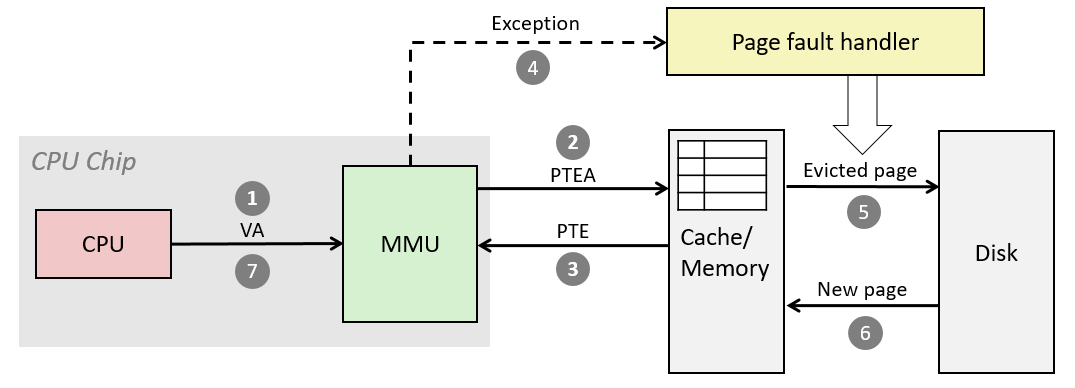
- processor sends virtual address to MMU
- MMU requests page table entry (PTE) from page table in cache/memory
- PTE sent to MMU
- valid bit is zero, MMU triggers page fault exception
- handler identifies page to evict
- if modified (dirty) write out (page out) to disk
- handler loads (pages in) new page, updates PTE in memory
- handler returns to original process, restarting faulting instruction
2 Protection
- want to enforce things like read-only code and kernel-only memory
- page table permission bits natural way to do this
- extend page table to include read/write/execute bits
- MMU checks them on every memory access
- if violated, raises exception and kernel sends SIGSEGV (segmentation fault) signal to process

2.1 Permissions Review
| Section | Read | Write | Execute |
|---|---|---|---|
| Stack | 1 | 1 | 0 |
| Heap | 1 | 1 | 0 |
| Static Data | 1 | 1 | 0 |
| Literals | 1 | 0 | 0 |
| Instructions | 1 | 0 | 1 |
3 Improving Performance
3.1 Translation Lookaside Buffer (TLB)
- MMU has to access memory twice: once to get the PTE, and again for the actual memory request
- we can speed up address translation via a small cache of page table entries (called a translation lookaside buffer (TLB)
- VPN split into tag and index for this cache
- modern Intel processors have 128 or 256 entries in TLB
- we can speed up address translation via a small cache of page table entries (called a translation lookaside buffer (TLB)
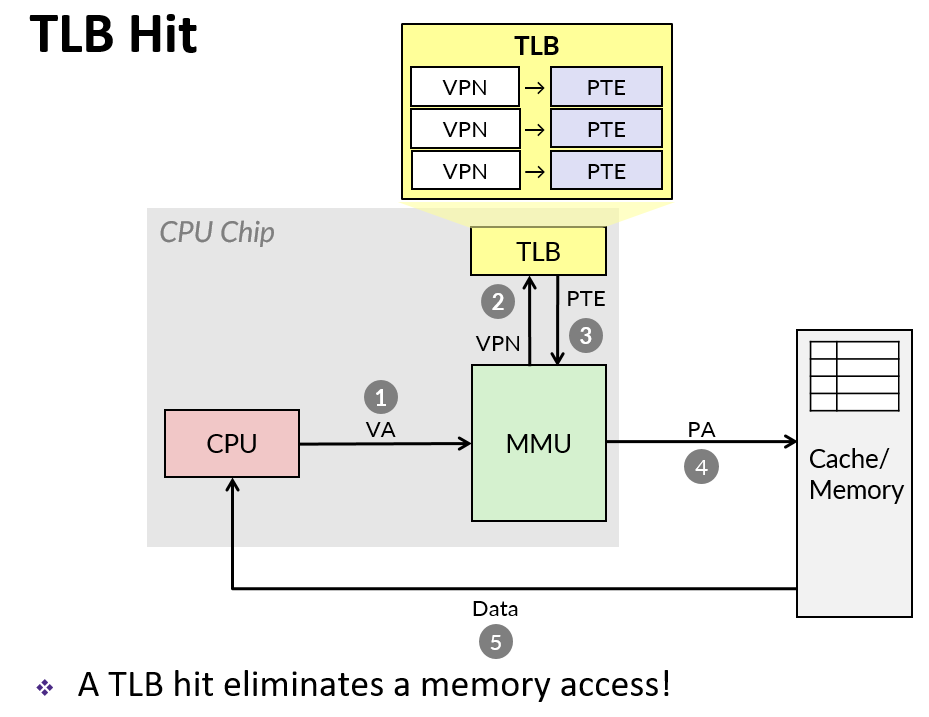
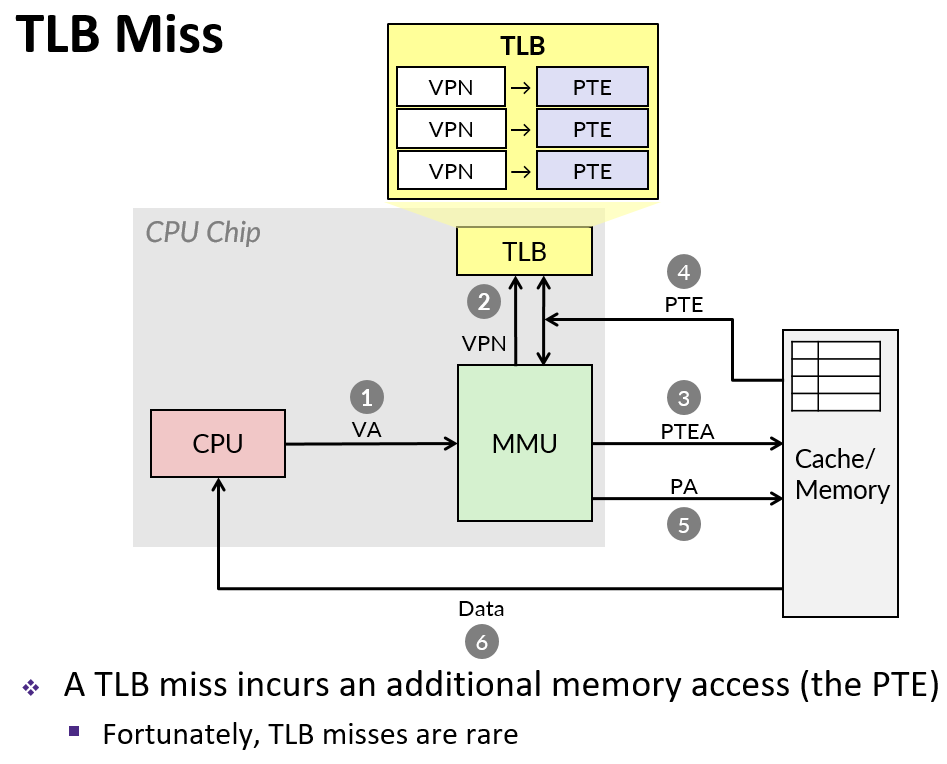
3.1.1 Bringing It All Together
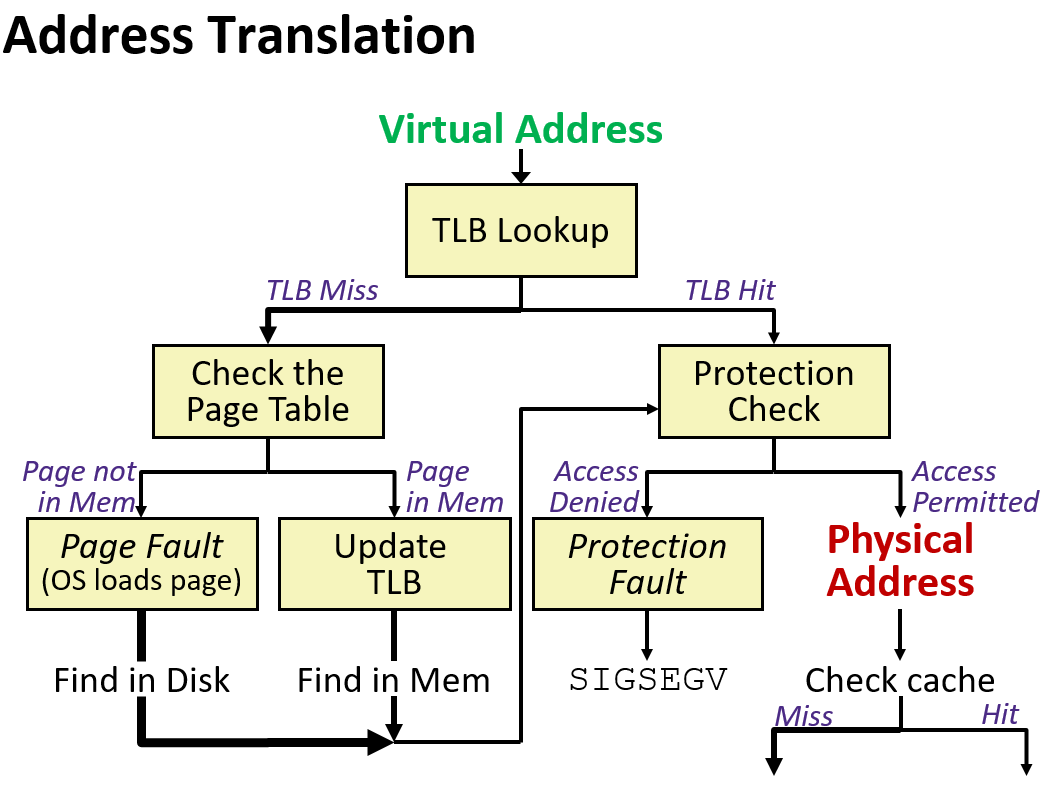
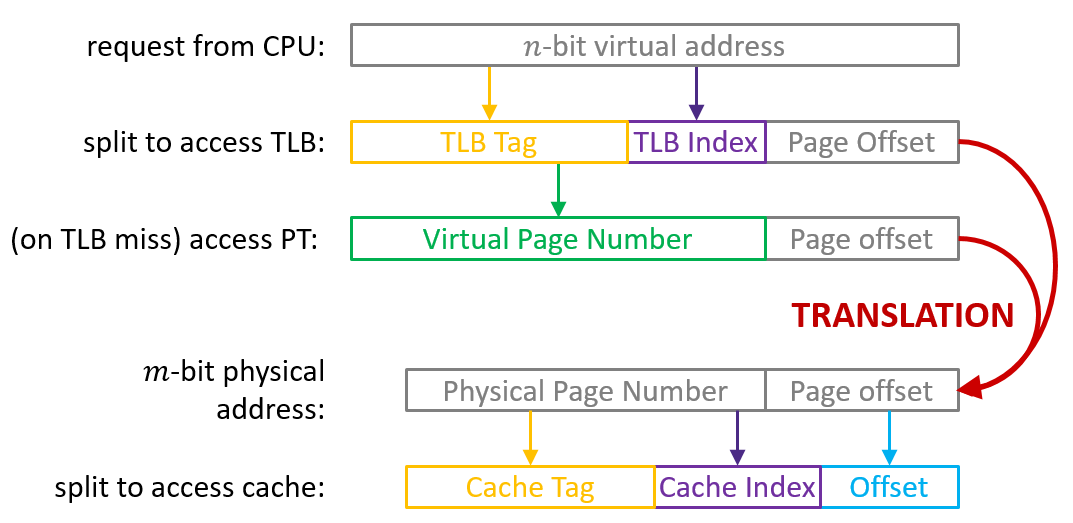
- Basic Parameters
- \(N=2^n\) — Number of addresses in virtual address space
- \(M=2^m\) — Number of addresses in physical address space
- \(P=2^p\) — Page size (bytes)
- Components of the virtual address (VA)
- VPO — Virtual page offset
- VPN — Virtual page number
- TLBI — TLB index
- TLBT — TLB tag
- Components of the physical address (PA)
- PPO — Physical page offset (same as VPO)
- PPN — Physical page number
3.1.2 Extended Example
- addressing:
- 14-bit virtual addresses
- 12-bit physical addresses
- 64-byte pages
- how will virtual and physical addresses be used?
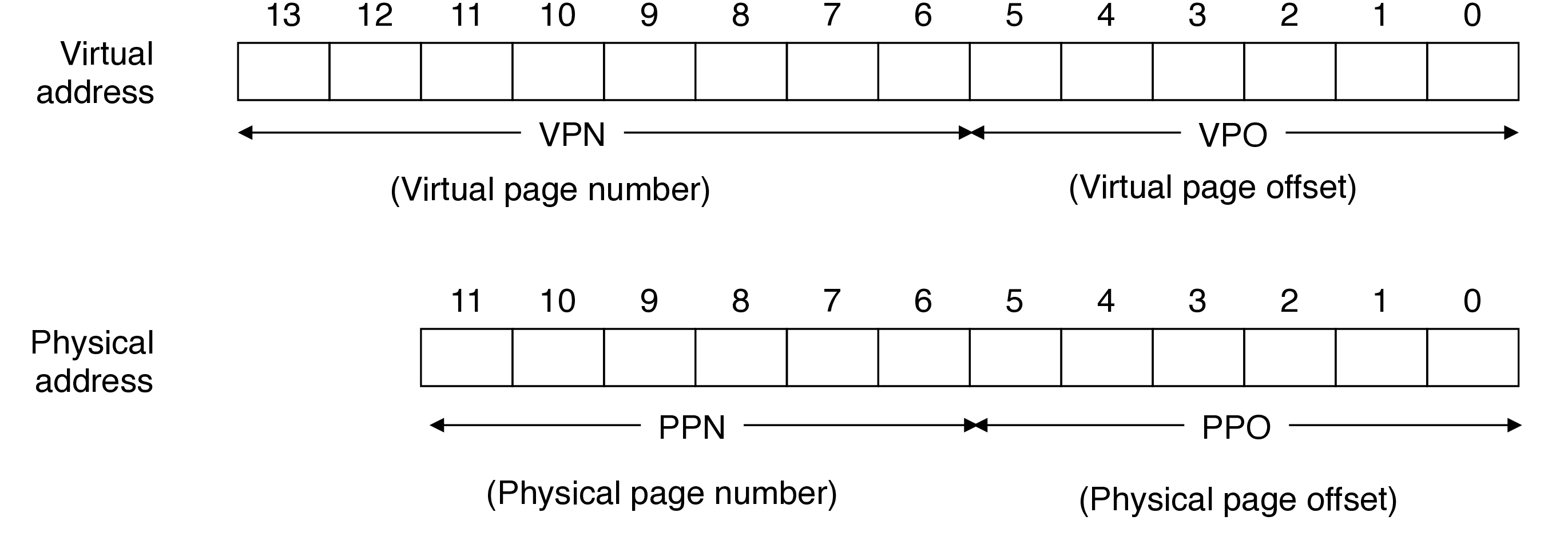
- page table
- only showing first 16 entries (out of how many? one for every virtual page = \(2^{n-p} = 2^8 = 256\))
- using 2 hex digits for PPN even though it's only 6 bits
- other management bits not shown
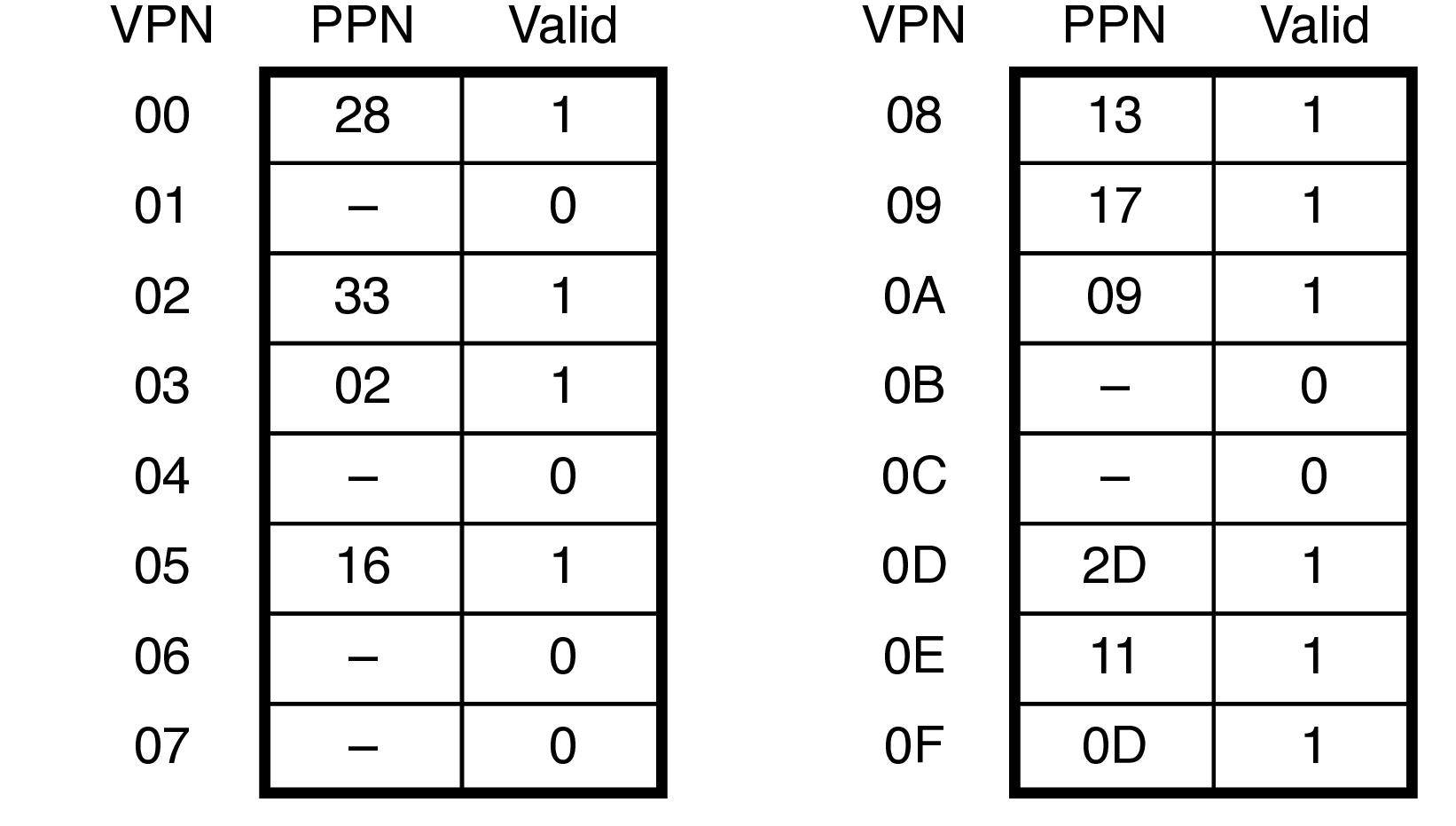
- translation lookaside buffer
- 16 entries
- 4-way associative
- VPN split into TLB tag (TLBT) and TLB index (TLBI)
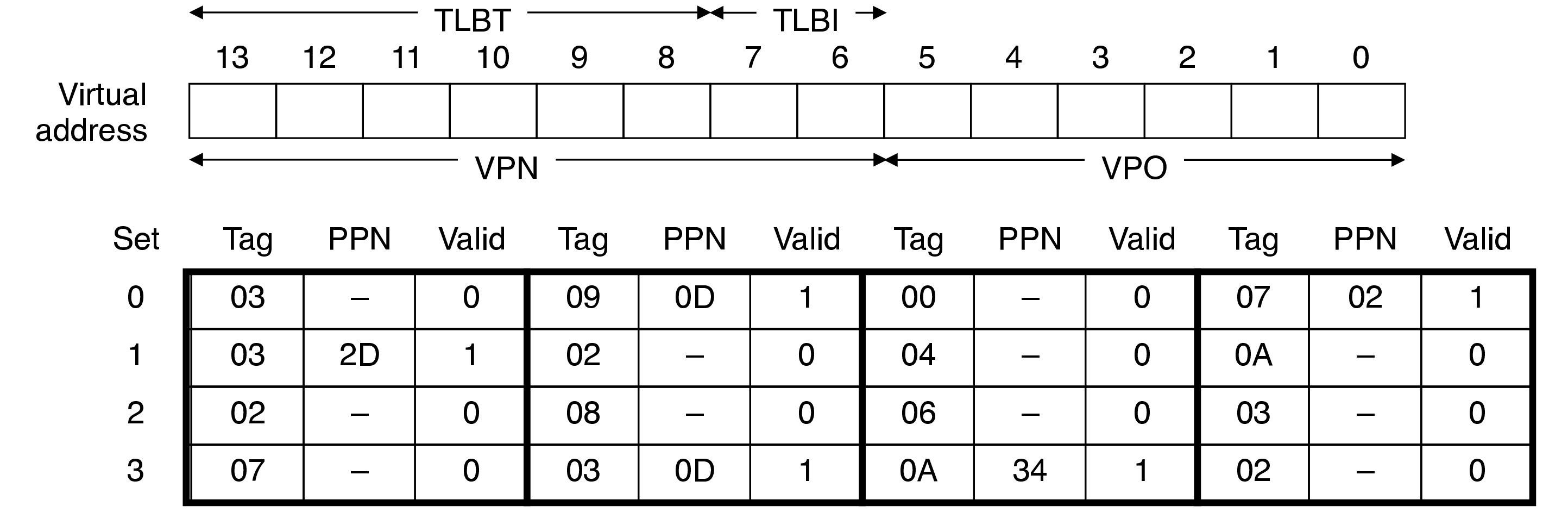
- cache
- direct-mapped with 4-byte blocks
- total capacity of 64 bytes (16 blocks)
- physically addressed
- physical address split into cache tag (CT), cache index (CI) and cache offset (CO)
- just a coincidence that PPN is the same width as the cache tag
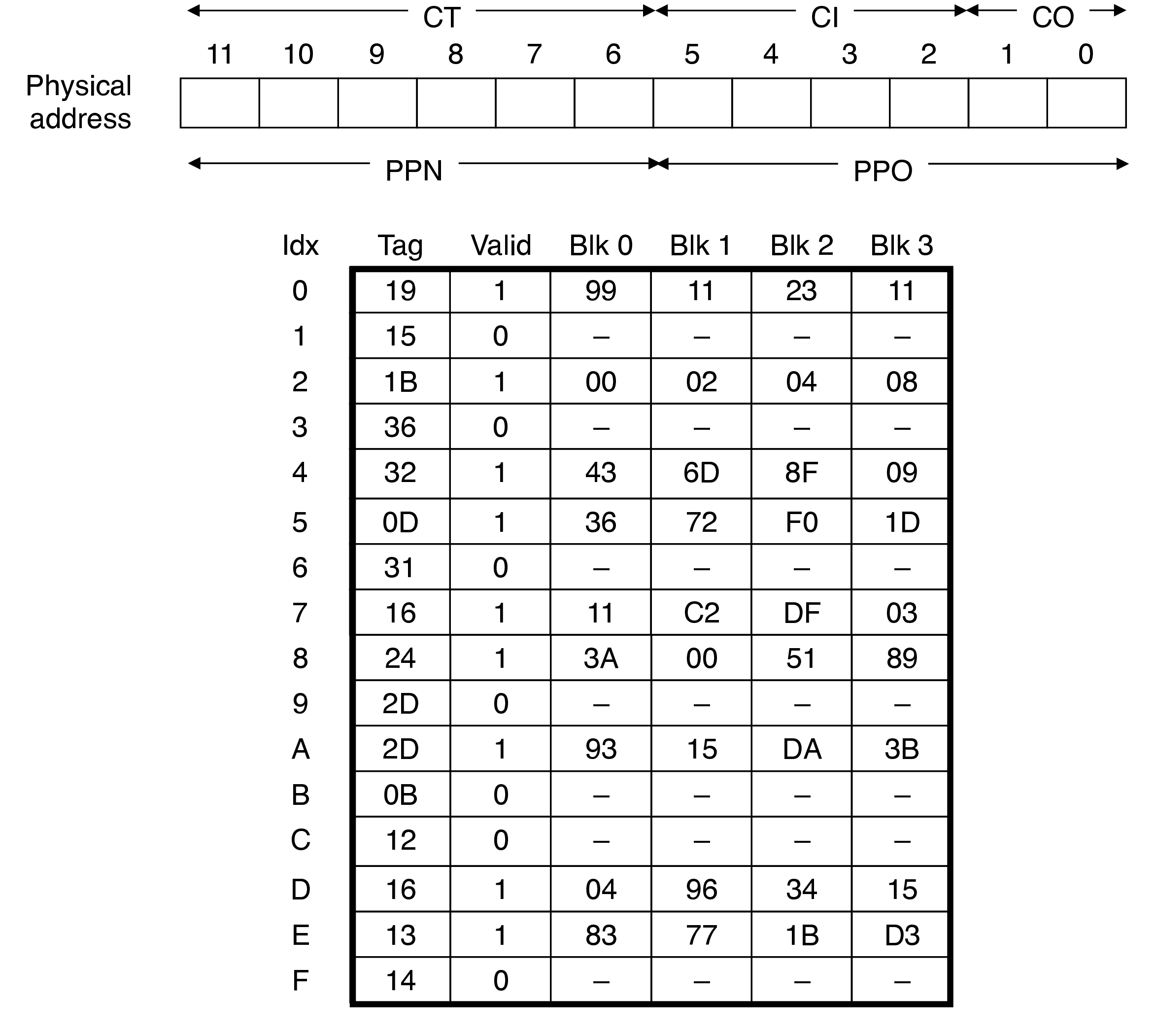
| Request | VPN | TLBT | TLBI | TLB hit? | page fault? | PPN | CT | CI | CO | cache hit? | data (byte) |
0x03d4 |
0x0f |
0x03 |
3 |
yes | no | 0x0d |
0x0d |
5 |
0 |
yes | 0x36 |
0x038f |
0x0e |
0x03 |
2 |
no | yes | - | - | - | - | - | - |
0x0020 |
0x00 |
0x00 |
0 |
no | no | 0x28 |
0x28 |
8 |
0 |
no | - |
0x036b |
0x0d |
0x03 |
1 |
yes | no | 0x2d |
0x2d |
a |
3 |
yes | 0x3b |